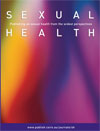SH22138Online platforms for prescription and supply of hormonal contraception in Australia: a mapping review
 , Alice Rumbold, Emily Callander, Pip Buckingham, Anisa Assifi, Danielle Mazza and Luke E. Grzeskowiak
, Alice Rumbold, Emily Callander, Pip Buckingham, Anisa Assifi, Danielle Mazza and Luke E. Grzeskowiak
Despite the fact that access to contraception it is key to reproductive autonomy, initiating and continuing use of hormonal contraception in Australia can be costly and logistically challenging. This mapping review aimed to identify and comment on the number and accessibility of online platforms providing prescriptions for and supply of hormonal contraception within Australia. We found that despite addressing some of the identified barriers, these services are unlikely to be truly accessible to all consumers.
SH22138 Abstract | SH22138 Full Text | SH22138PDF (1013 KB) Open Access Article



